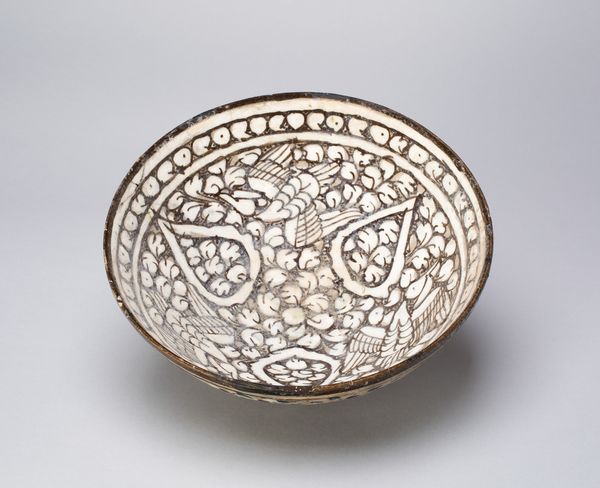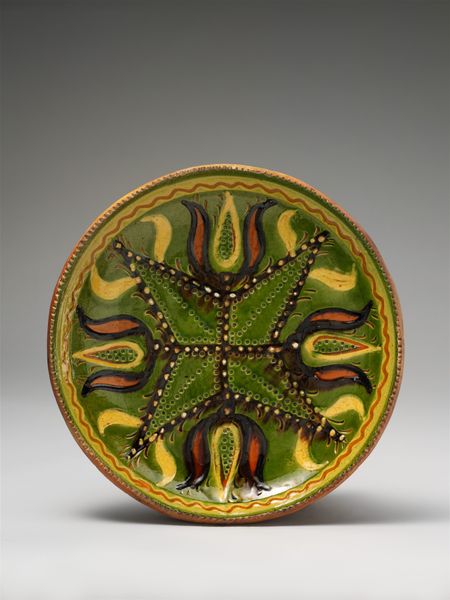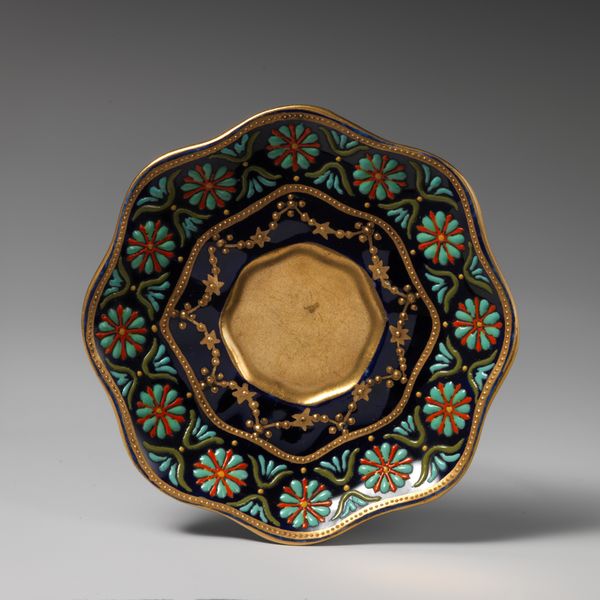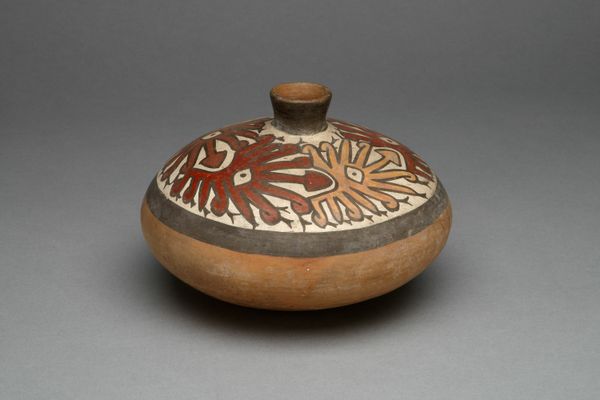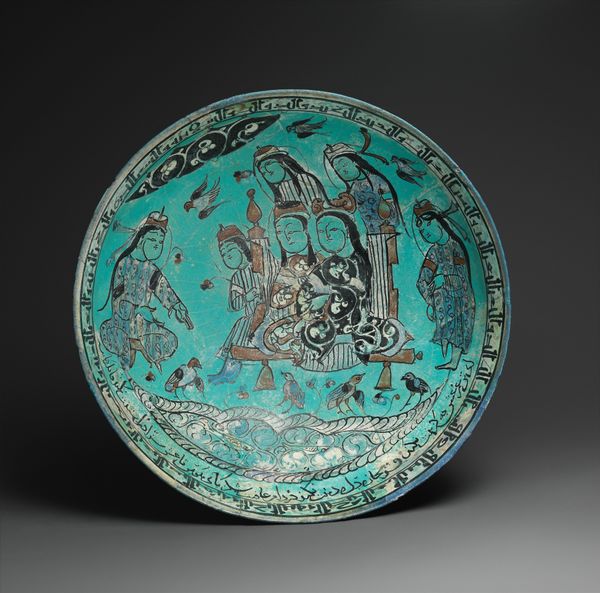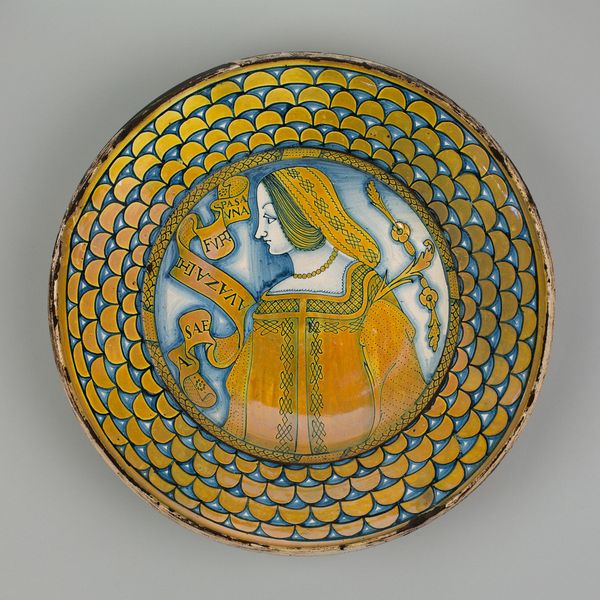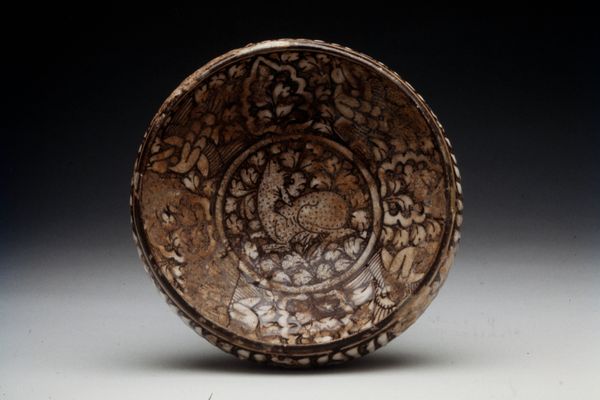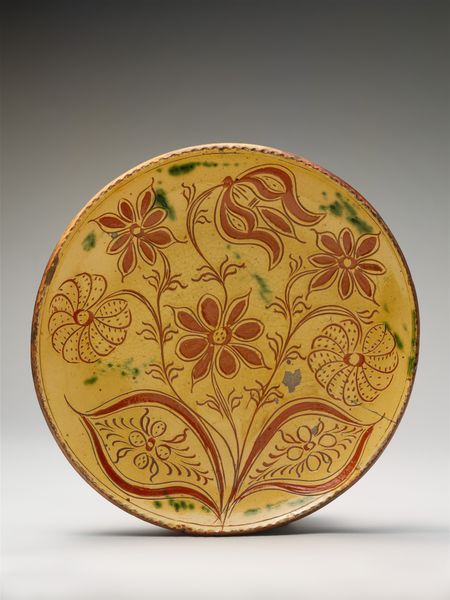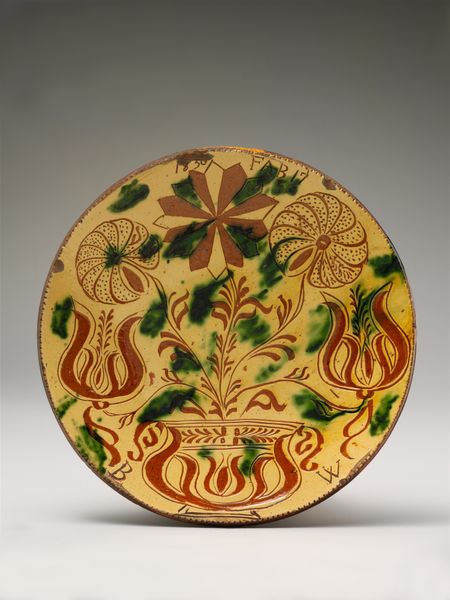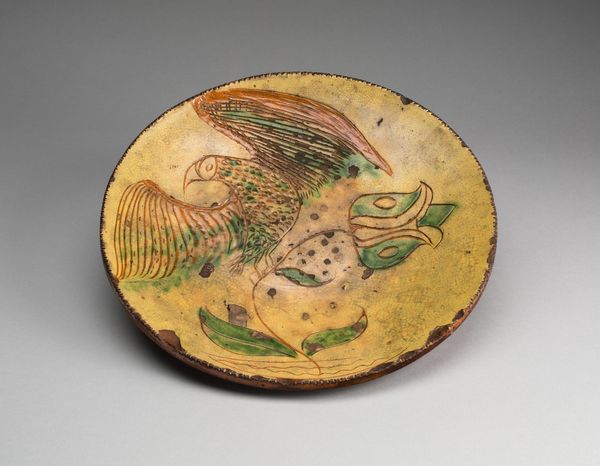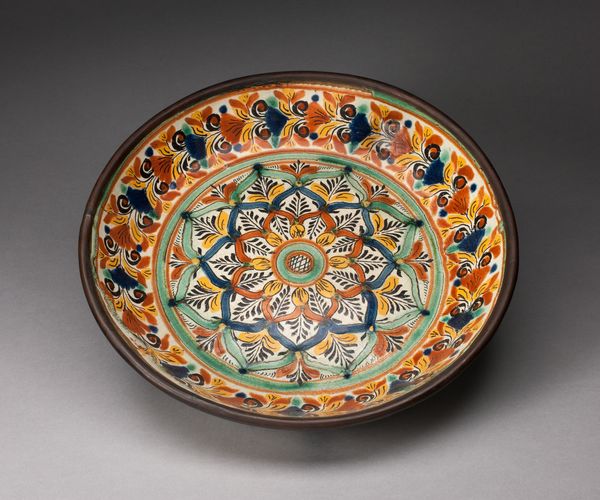
Bowl Ilkhanid Dynasty (1256–1353) , late 13th/early 14th century
0:00
0:00
ceramic, earthenware
#
medieval
#
asian-art
#
ceramic
#
figuration
#
earthenware
#
geometric
#
ceramic
#
islamic-art
#
earthenware
Dimensions: H.: 10.2 cm (4 1/8 in.); diam.: 19.8 cm (7 7/8 in.)
Copyright: Public Domain
Editor: This is a ceramic bowl, likely earthenware, from the Ilkhanid Dynasty, sometime in the late 13th or early 14th century. It's at the Art Institute of Chicago. I’m immediately drawn to the central image of the animal – possibly a cheetah. The colors and geometric designs create such a fascinating contrast! What's your interpretation of its cultural significance? Curator: It's fascinating how this bowl serves as a snapshot of cultural exchange under the Ilkhanids. This dynasty, a branch of the Mongol Empire in Persia, fostered trade and artistic fusion across Eurasia. The cheetah, frequently depicted in royal contexts, hints at the bowl’s function – perhaps for elite use? What does the blend of Persian, Islamic, and Mongol influences suggest to you about the art market then? Editor: It makes me think about how globalization isn't a modern concept! Luxury goods moved across vast distances. And it seems like this piece reflects that taste was likely influenced by cross-cultural interaction in the markets. But why ceramic? What does the choice of materials mean for the intended audience? Curator: Ceramics were practical but also capable of exquisite artistry. High-end ceramics could emulate the prestige of metalwork, appealing to a wealthy, discerning clientele. This bowl reveals the dynamics of power through visual display. What social statement do you think objects like this might have made at the time? Editor: It was probably a way to showcase status and wealth in a region that had deep trade connections to China. I never thought about ceramics as objects loaded with meaning beyond their function. Thanks! Curator: Indeed. This object reminds us that art is never created in a vacuum; it’s part of larger social, economic, and political narratives. Considering an object’s display and function illuminates the story of its creation and audience.
Comments
No comments
Be the first to comment and join the conversation on the ultimate creative platform.
